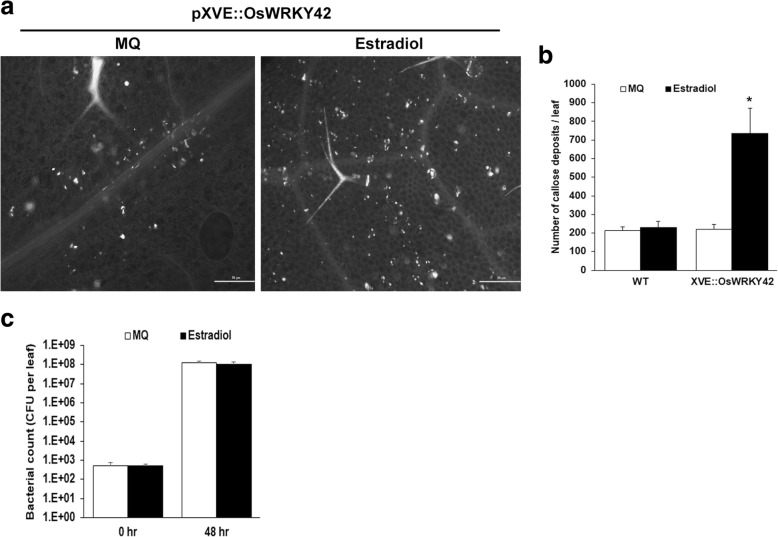Fig. 3.
Ectopic expression of OsWRKY42 in Arabidopsis induces callose deposition but does not provide enhanced tolerance to bacterial infection. Leaves of three weeks old transgenic Arabidopsis plants of T2 generation carrying 17 β-estradiol inducible OsWRKY42 (XVE::OsWRKY42) were infiltrated either with inducer (20 μM 17-β-estradiol) or water using a 1 ml needleless syringe. a. For assaying callose deposition, leaves were harvested after 16 h, stained with aniline blue and observed under an epifluorescence microscope. The white spots represent callose deposits. The scale bars in the images represent 50 μm. b. The number of callose deposits per leaf were counted manually. The graph represents the average number of callose deposits per leaf (n = 5–6). c. For Pst infection assays, estradiol pre-infiltrated leaves were infiltrated with cells of a Pst culture (OD = 0.01). Samples (3 leaves per plant) were collected, 0–2 days post infection (dpi) and processed for estimating total bacterial counts. The number of colony forming units (CFU)/leaf was calculated in leaves from five independent plants each for induced (estradiol) and uninduced (water) sets. Data was analysed using the Student’s t-test for independent means (*indicates significant difference with p value < 0.05). Error bars represent standard deviation. All of the above experiments were repeated in three independent XVE::OsWRKY42 transgenic lines

